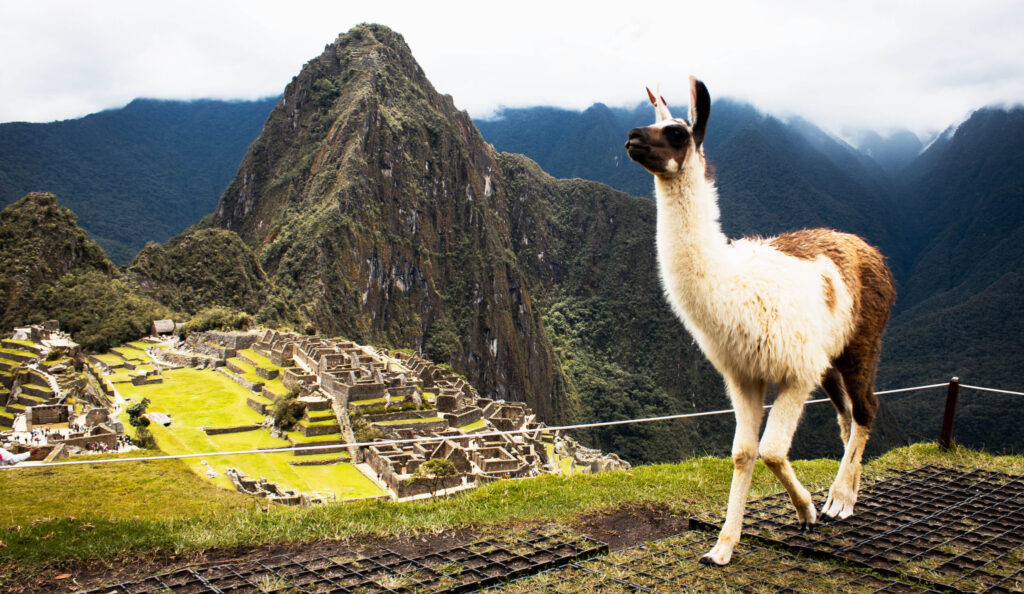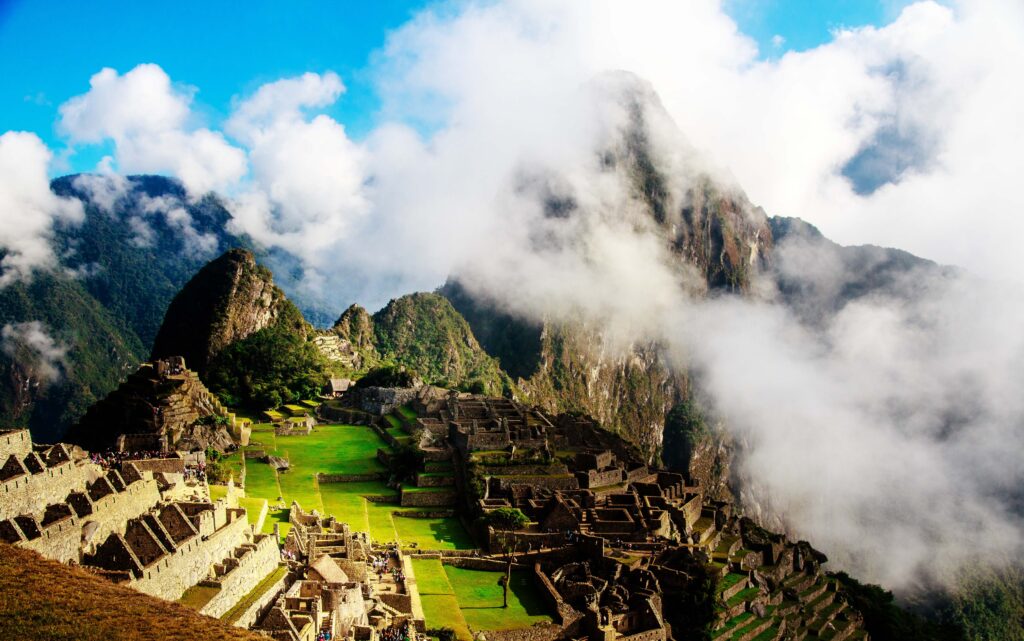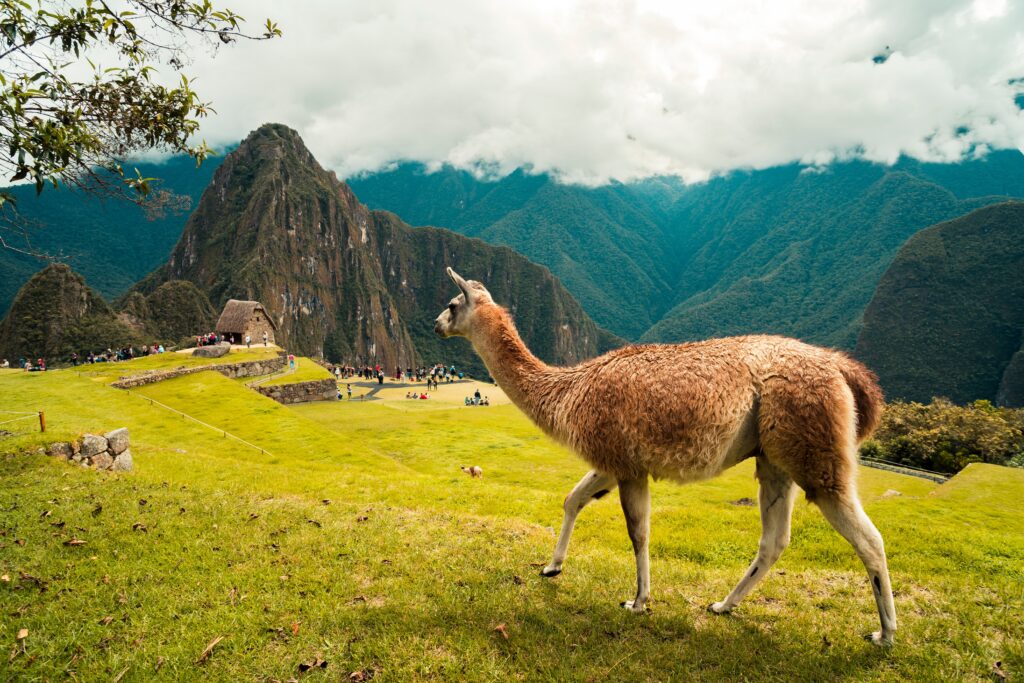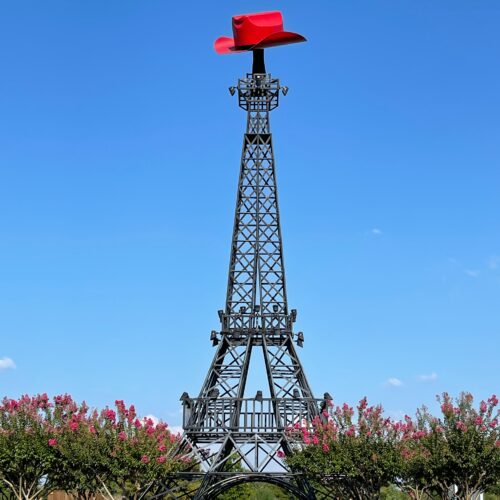
From trekking to Machu Picchu to surviving the llama spit, this tip-list has got you covered
Machu Picchu, one of the world’s most famous and breathtaking ancient sites, is a must-visit destination for anyone interested in history, architecture, and natural beauty, and llamas!
Located high in the Andes Mountains of Peru, Machu Picchu was built by the Inca Empire in the 15th century and abandoned just a hundred years later. Rediscovered in 1911 by explorer Hiram Bingham, the site is now a UNESCO World Heritage site and attracts millions of visitors annually.
The stunning architecture, spectacular views, and fascinating history make Machu Picchu a genuinely unforgettable experience.
Here are some travel tips for visiting Machu Picchu:
- Book your tickets in advance: Machu Picchu only allows a limited number of visitors daily, and tickets can sell out quickly, especially during peak season. It’s best to book your tickets well in advance to ensure you see this excellent site.
- Hire a guide: It’s recommended to hire a guide to explore the ruins of Machu Picchu. A guide will provide historical context and exciting stories about the site and ensure you get all of the highlights.

- Start early: Machu Picchu is best visited in the morning before the crowds arrive. It’s recommended to arrive at the site as early as possible to avoid crowds and take more time to explore.
- Bring comfortable shoes and clothing: Getting to the site and once at the locale involves a lot of walking and hiking, so it’s essential to wear comfortable shoes and clothing. You’ll also want to bring a hat, sunscreen, and plenty of water.
- Stay in Aguas Calientes: Aguas Calientes is the nearest town to the site and offers a variety of accommodations, including hotels and hostels. Staying in Aguas Calientes lets you be close to the site and enjoy the town’s hot springs and restaurants.
- Take the train: The train is the easiest and most comfortable way to get to Machu Picchu. Several trains run between Cusco and Aguas Calientes; some even offer luxurious amenities like gourmet dining and live entertainment.
- Enjoy the views: This historical site is a natural wonder, so take the time to admire the stunning views of the surrounding mountains and valleys.
 Did you know?
Did you know?
Machu Picchu is built on a geological fault line. The Incas, who were skilled engineers, designed the buildings and walls of Machu Picchu to be earthquake-resistant.
Despite numerous earthquakes over the centuries, the site has largely remained intact thanks to the Inca’s innovative building techniques.
A little history:
Machu Picchu was built by the Inca Empire in the 1400s, during the reign of Pachacuti Inca Yupanqui. The site was likely used as a royal estate or retreat for Inca leaders and aristocrats.
The Incas were a powerful indigenous civilization that inhabited the Andes Mountains of South America, particularly in modern-day Peru, from the 13th to the 16th centuries.
They were known for their impressive feats of engineering, agriculture, and military conquests.
Machu Picchu is one of the most famous Inca sites in the Andes Mountains of Peru. It was built during the 1400s and is believed to have been used as a royal estate or religious site.
 The Incas were skilled farmers who built extensive irrigation systems to cultivate crops in the Andean mountains. They also had a complex social hierarchy with a powerful emperor at the top, followed by nobles, administrators, and commoners.
The Incas were skilled farmers who built extensive irrigation systems to cultivate crops in the Andean mountains. They also had a complex social hierarchy with a powerful emperor at the top, followed by nobles, administrators, and commoners.
Religion was an essential aspect of Inca life, and they worshiped many gods and goddesses, including the sun god Inti.
The Inca Empire was conquered by Spanish conquistadors led by Francisco Pizarro in the 16th century, and their civilization was largely destroyed. Machu Picchu is believed to have been abandoned during this Spanish Conquest.
After the Spanish Conquest in the 16th century, the site was abandoned and remained hidden for hundreds of years until it was rediscovered in 1911 by American explorer Hiram Bingham.
Its precise function and reason for abandonment still need to be solved, as the Incas did not leave any written records.


